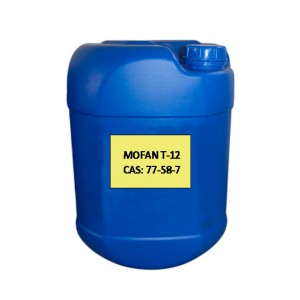Dibutyltin Dilaurate: A Versatile Catalyst with Various Applications
Dibutyltin dilaurate, also known as DBTDL, is a widely used catalyst in the chemical industry. It belongs to the organotin compound family and is valued for its catalytic properties in a range of chemical reactions. This versatile compound has found applications in polymerization, esterification, and transesterification processes, making it an essential component in the production of various industrial products.
One of the primary uses of dibutyltin dilaurate is as a catalyst in the production of polyurethane foams, coatings, and adhesives. In the polyurethane industry, DBTDL facilitates the formation of urethane linkages, which are crucial for the development of high-quality polyurethane materials. Its catalytic activity enables the efficient synthesis of polyurethane products with desirable properties such as flexibility, durability, and thermal stability.
Furthermore, dibutyltin dilaurate is employed as a catalyst in the synthesis of polyester resins. By promoting the esterification and transesterification reactions, DBTDL facilitates the production of polyester materials used in the manufacturing of textiles, packaging, and various industrial applications. Its catalytic role in these processes contributes to the enhancement of product quality and the optimization of production efficiency.

In addition to its role in polymerization and esterification, dibutyltin dilaurate is utilized in the production of silicone elastomers and sealants. The catalytic activity of DBTDL is instrumental in the crosslinking of silicone polymers, leading to the formation of elastomeric materials with exceptional mechanical properties and resistance to heat and chemicals. Moreover, dibutyltin dilaurate serves as a catalyst in the curing of silicone sealants, enabling the development of durable and weather-resistant sealant products widely used in construction and automotive applications.
The versatility of dibutyltin dilaurate extends to its application as a catalyst in the synthesis of pharmaceutical intermediates and fine chemicals. Its catalytic properties play a crucial role in facilitating various organic transformations, including acylation, alkylation, and condensation reactions, which are essential steps in the production of pharmaceutical compounds and specialty chemicals. The use of DBTDL as a catalyst in these processes contributes to the efficient synthesis of high-value chemical products with diverse applications.
Despite its widespread use as a catalyst, dibutyltin dilaurate has raised concerns regarding its potential environmental and health impacts. As an organotin compound, DBTDL has been the subject of regulatory scrutiny due to its toxicity and persistence in the environment. Efforts have been made to minimize the environmental impact of dibutyltin dilaurate through the development of alternative catalysts and the implementation of stringent regulations governing its use and disposal.
In conclusion, dibutyltin dilaurate is a valuable catalyst with diverse applications in the chemical industry. Its role in polymerization, esterification, silicone synthesis, and organic transformations underscores its significance in the production of a wide range of industrial and consumer products. While its catalytic properties are instrumental in driving various chemical processes, the responsible use and management of dibutyltin dilaurate are essential to mitigate potential environmental and health risks associated with its use. As research and innovation continue to advance, the development of sustainable and safer catalysts will contribute to the evolution of the chemical industry towards more environmentally friendly practices.
Post time: Apr-19-2024


